What does the size of wheels do in skateboarding?
It affects the Rolling Resistance and causes minimum impact on flip tricks.
What does the size of the wheels do?
They say it affects speed, acceleration, and ease of tricks. We will study it scientifically using a physics engine according to the physics.
For more physics engine based experiment, please refer to the previous posts.
Summary
Bigger wheels are heavier. But this causes minimum effect.
With a difference of 3mm in diameter, a set of 4 wheels weighs 48 grams more (or less). This is as light as an egg, which causes minimum impact on flip tricks in terms of weight.The difference in the position of mass should matter more than the simple increase in the weight.
Bigger wheels have less rolling resistance
The rolling resistance is proportional to the weight and inversely proportional to the diameter of the wheels. The bigger the wheels are, the more likely it rolls due to this reason.
Simulation
The weight and impact on tricks
Basic figures
According to bones' website, one set of 53mm wheels weighs slightly more than 200 grams. For simulation's sake, let's say precisely 200 grams per set and 50 grams per wheel.

Weighing them
To make sure, let's weigh it. What we have here is bones' 53mm V2 shape wheel. It weighs 56 grams.
As it's not unreasonably heavier than 50 grams, it's safe to say that we call it 50 grams per wheel.

Impact of 3mm difference
Typically, variations of skate wheels come in differences of 3mm.
For example, major brands have 50mm, 53mm, and 56mm variations. Sources also say each wheel gains 4 grams as it gains 1mm bigger in diameter.
With a difference of 3mm, one wheel gains 12 grams, and one set of wheels gains 48 grams.

3mm of difference = an egg
Can you think of anything that weighs 48 grams? An egg does.
So, if you choose 53mm wheels instead of 50mm, your board is heavier than an egg.
*It, of course, changes depending on your wheels' shapes.

What does the difference of an egg do to flip tricks?
To verify it, we are using three types of boards: A standard board that weighs 3kg, a board heavier by one egg, and two eggs. We will apply external force to those boards and see how they react.
*Eggs' weights are distributed evenly to the board, and those visible eggs have no weight.

Condition of experiment
In this experiment, we will drop a ball to one side of each board with its axis fixed in the air.
The balls' contact points are mechanically calculated and identical in all conditions. Under this condition, we can compare the necessary energy purely needed to flip the boards.
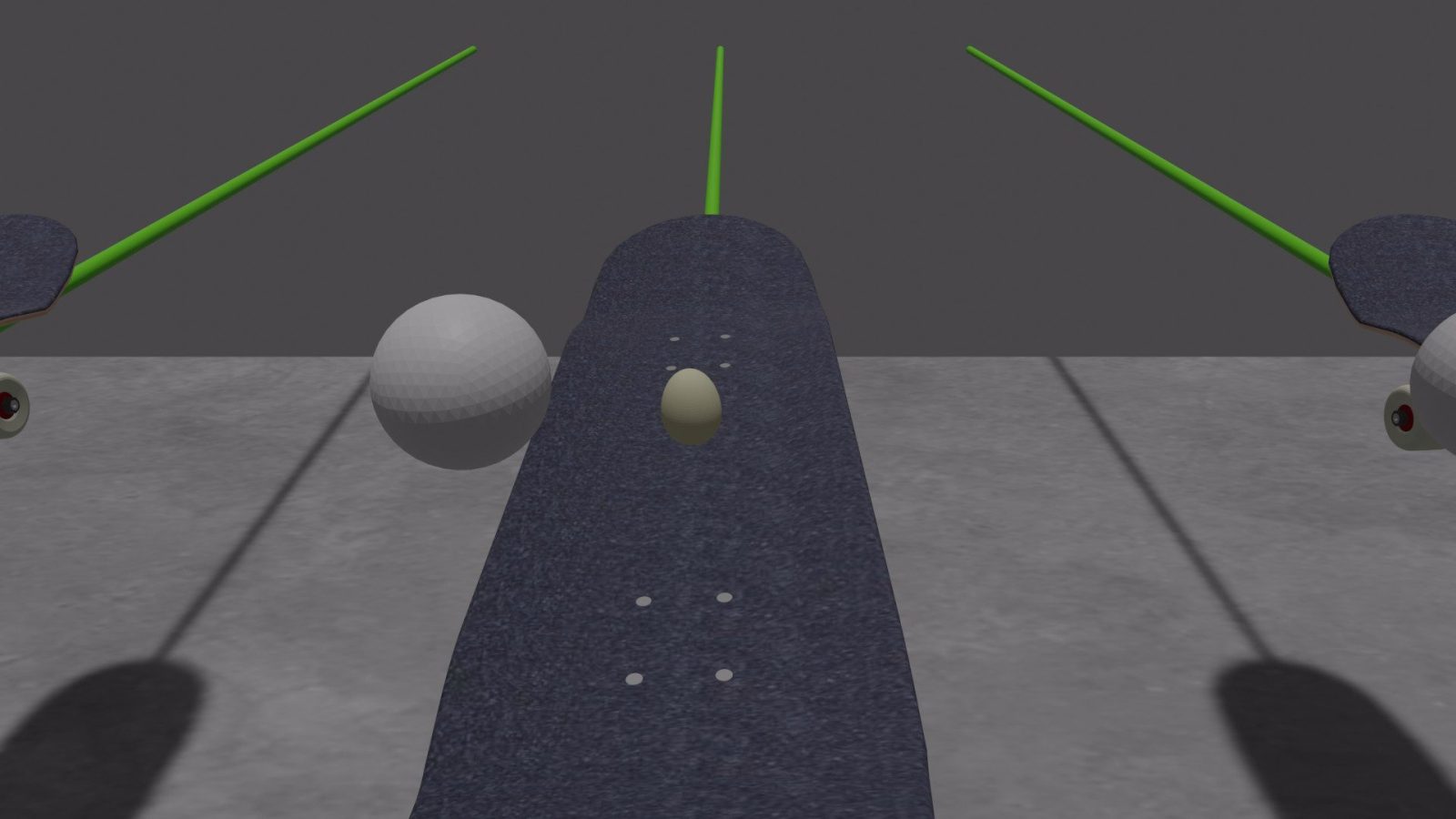
Result of experiment
As we drop the balls, their outcomes are more or less the same.
If we increase the weight of a board to 30 kg, it flips significantly slowly.
This leads to the following conclusion in this experiment: Although the board's weight actually affects how easily a board flips, with only the difference of an egg or two, we can hardly see it.
**Please watch the video for more detail.
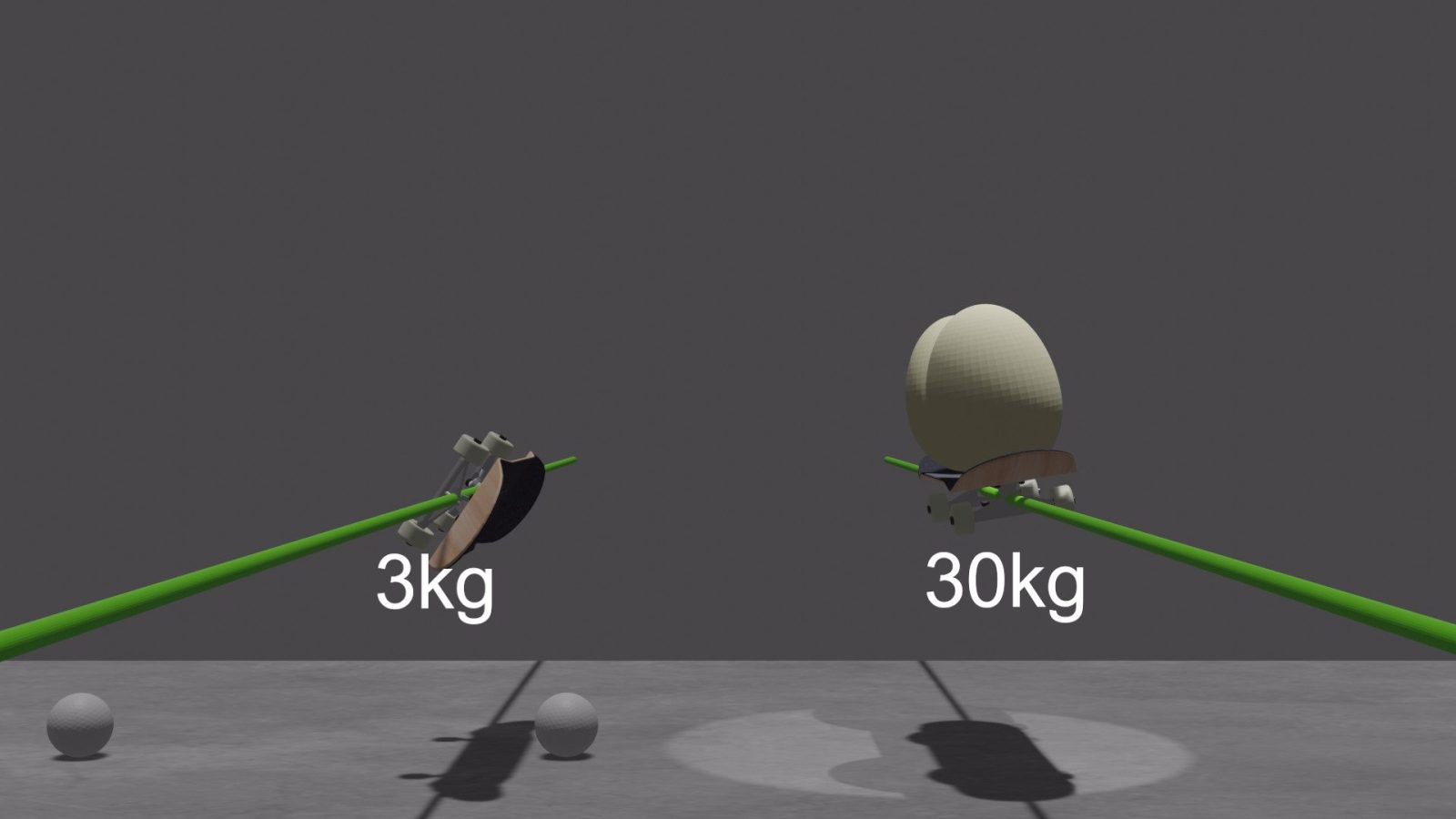
The impact on speed and ridability
Common Theory
So it doesn't do much in flip tricks. How about the effect on the riding? In general, this is what they say:
- The bigger wheels allow a faster top speed.
- The smaller wheels allow faster acceleration.
Is this true? Let's verify it using a physics engine.

Condition of experiment
Before we begin the experiment, let's review some physics concepts. The sizes of wheels affect the rolling resistance, which can be calculated like the following but let's not go for it.
- F = Crr * N
- F = force
- Crr = rolling resistance coefficient
- N = normal force
Simply put, The rolling resistance is proportional to the weight and inversely proportional to the diameter of the wheels. In other words, the heavier a wheel is, the less likely it rolls. And the bigger it is, the more likely it is to roll.
Based on this, we are using three model types: weight, wheel size, and rolling resistance. As I guessed, the bigger wheels have less rolling resistance.
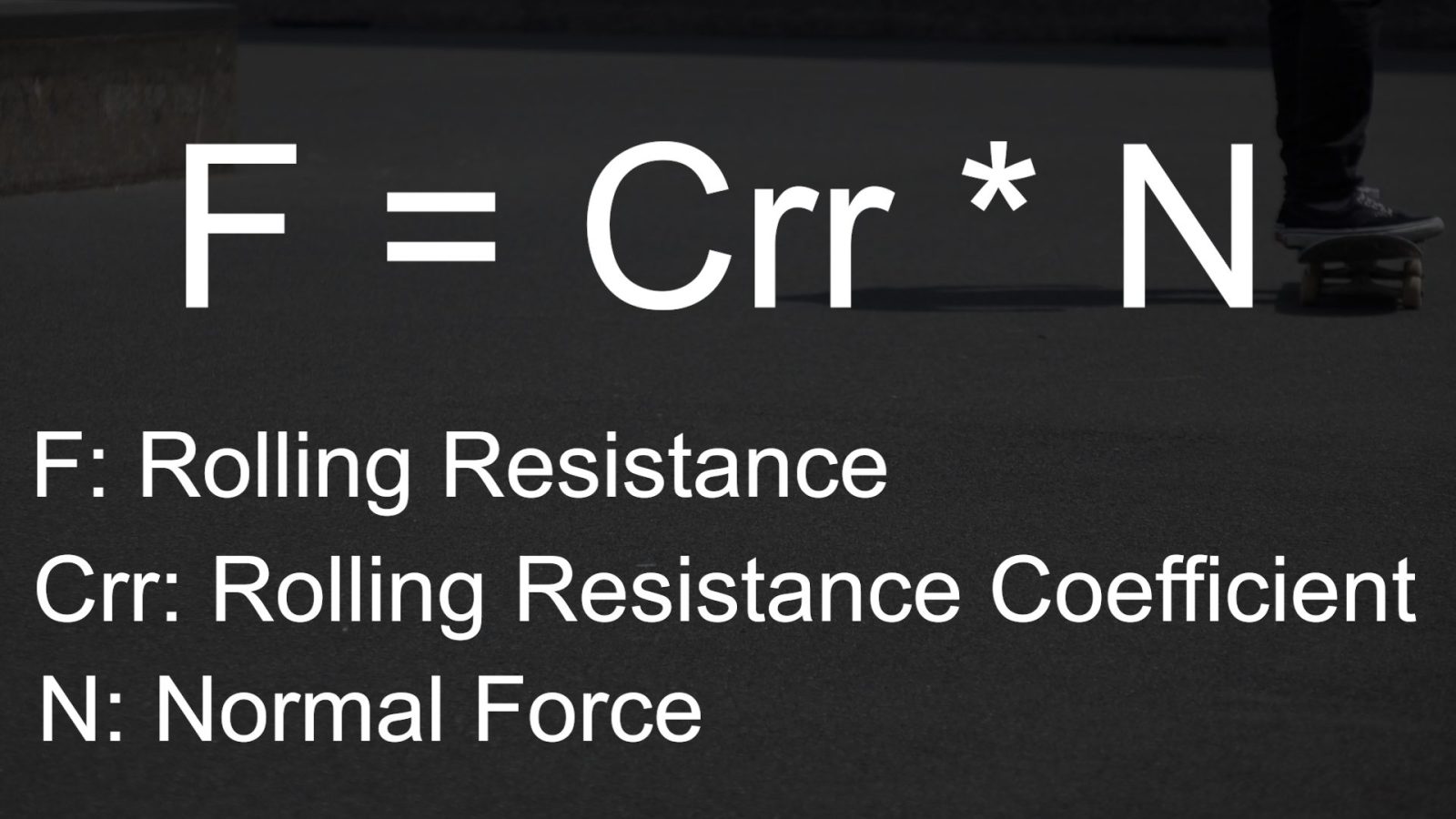
Result of experiment
As I let them slide down a smooth surface, the one with the biggest wheel size travels the longest distance.
The difference in the weight is only by an egg, so it would probably only do something meaningful in terms of speed if you can tell you can go faster after eating an egg.
What does matter, instead, is the rolling resistance. As the wheels become bigger, they gain less resistance from the ground and travel longer.
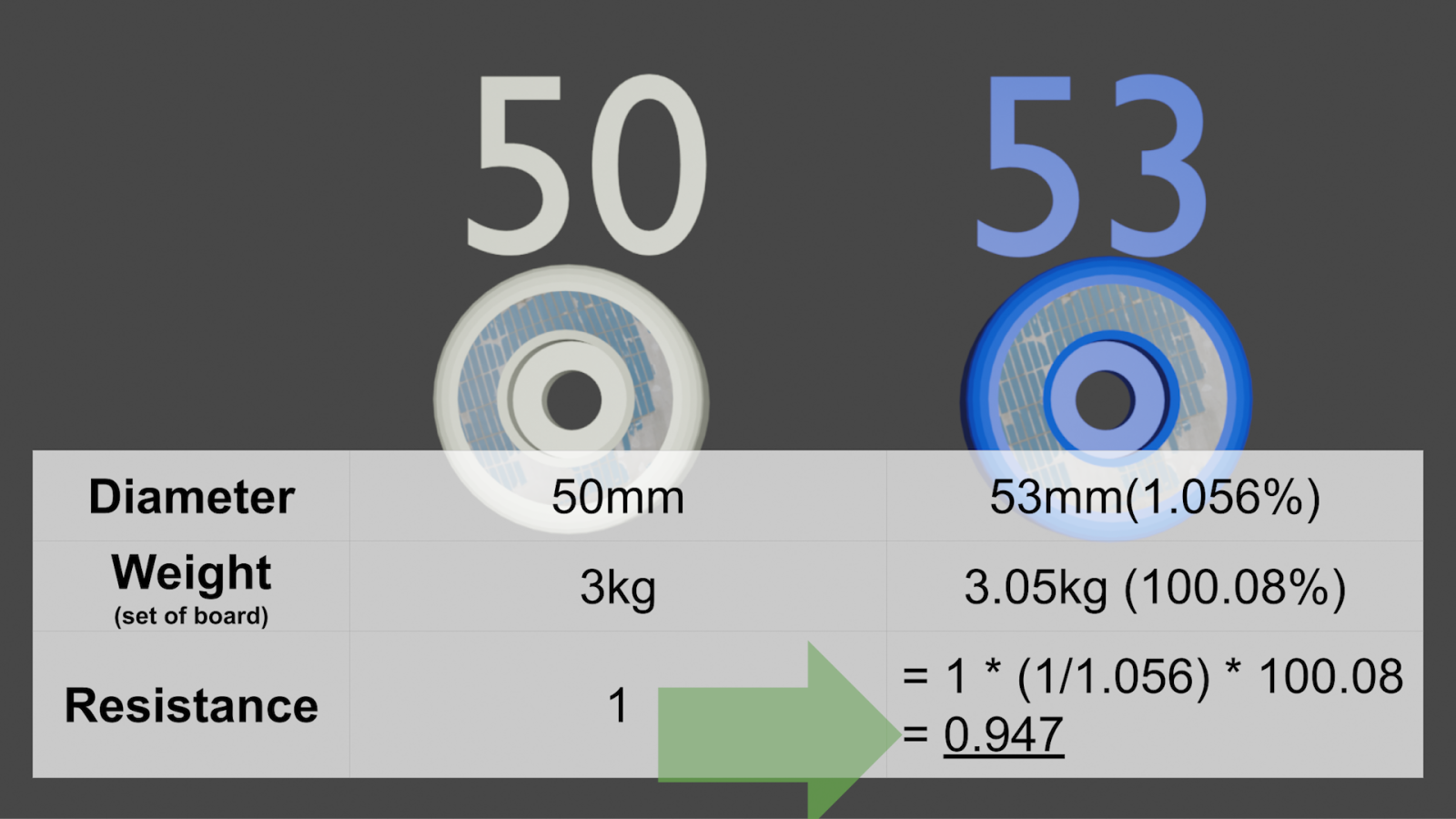
What weighs 48 grams??
This tendency stands out even more on bumpy or rough ground. As it gains less resistance from the ground, the bigger wheels can travel longer than smaller ones.
It's like the principle of leverage. You can lift an object with less energy as you get farther away from the fulcrum. In skateboarding, as the force of the ground tries to spin, the wheels gets farther from the fulcrum, it can move the center of mass more efficiently.
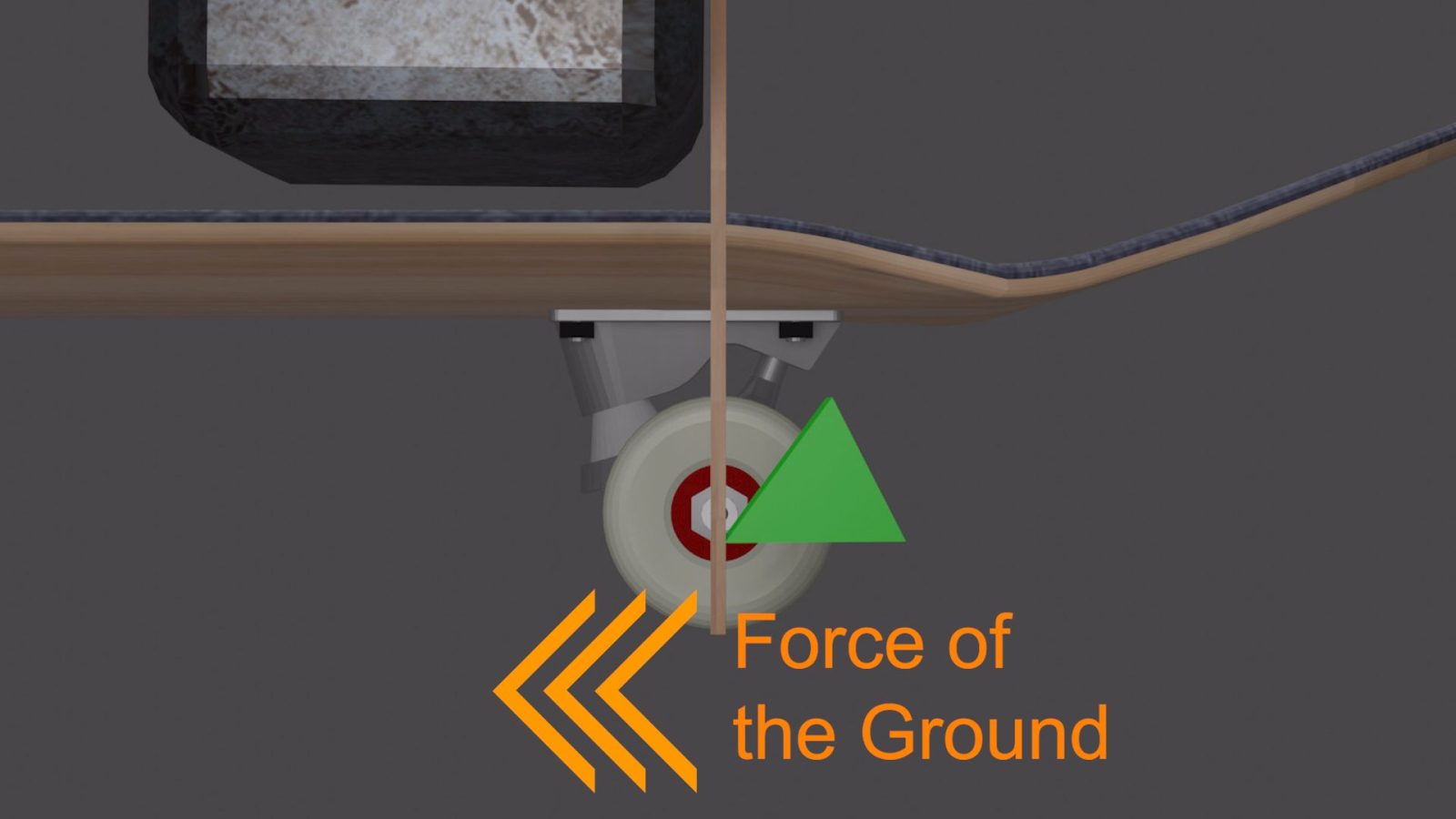


 Convert your video into 3D
Convert your video into 3D Facebook
Facebook Twitter
Twitter



